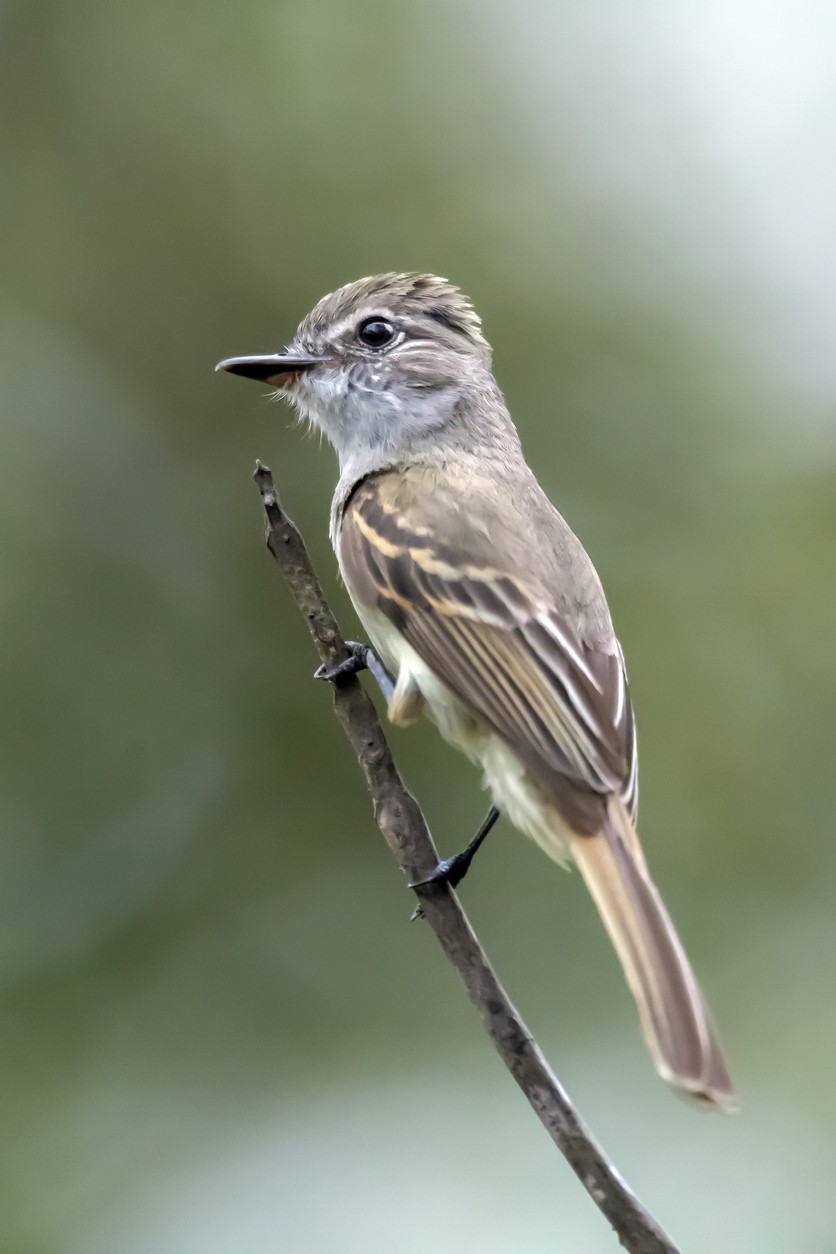Flammulated Flycatcher
A species of Flammulated Flycatcher Scientific name : Ramphotrigon flammulatum Genus : Flammulated Flycatcher
Flammulated Flycatcher, A species of Flammulated Flycatcher
Botanical name: Ramphotrigon flammulatum
Genus: Flammulated Flycatcher
Content
Description General Info

Description
The flammulated flycatcher is approximately 6 to 6.5 inches (15-16.5 cm) in length and has a chunky body. Adult males and females are similar in plumage, with each possessing olive to a worn gray-brown upperparts and head. A whitish supraloral stripe and crescent are behind the bird's eyes. It also has a dusky lore. The throat is whitish and the chest is a pale gray with inconspicuous dusky streaking, while the belly and undertail coverts are a pale yellow. Additionally, this species has dark brown, well-rounded wings with pale cinnamon-edged coverts and remiges. The wings are about 3 inches (76 mm) long. The tail is also a dark brown edged with a narrow band of pale cinnamon. It is barely shorter than the wing and slightly rounded. The bird's bill is black, broad, and triangular with a slightly paler base and about half the length of its head. The legs are a dark gray and end with large, curved, and sharp claws. It has an orange mouth and a brown eye. The juvenile is similar to the adult, although the tail has a broad band of pale cinnamon. 
Size
17 cm
Nest Placement
Tree
Feeding Habits
Flammulated Flycatcher primarily consumes insects, capturing prey through agile flycatching maneuvers. Adapted for aerial pursuits, flammulated Flycatcher has a diet typified by this food source, indicative of specialized feeding adaptations among flycatchers.
Habitat
The flammulated Flycatcher frequents undisturbed tropical deciduous forests and is a habitat specialist in these regions. It is also found in arid and semiarid open thorn forests and woodlands, characterized by tall shrubs, low trees, dense thickets, and hedgerows. This species is indigenous to broad geographic areas with dry to wet seasonal climates, particularly the Pacific Arid Slope. Within its preferred habitats, the flammulated Flycatcher's population dynamics and distribution may vary seasonally, potentially influenced by local migrations or behavioral adaptations to variable environmental conditions.
Dite type
Insectivorous
General Info
Feeding Habits
Bird food type
Behavior
This flycatcher is a sluggish and skulking species that usually remains in the underbrush. When excited either by an intruder or when attempting to attract a mate, this species raises the feathers on its crown to form what appears to be a crest; however, unlike the closely related genus Myiarchus, it does not bob its head while displaying the crest. 
Distribution Area
This flycatcher is endemic to the Pacific lowlands of Mexico's western coast from Sinaloa to western Chiapas, while possibly extending into Guatemala, although this has not been confirmed. The total area that it lives in is estimated to be 66,000 km (25,482.7 sq mi). Its range is discontinuous and it is found in low densities when present. It lives in dry deciduous forest, arid and semi-arid thorn forest, and scrubby woodland at about 1000–1400 meters (3280–4593 ft) above sea level. This species is non-migratory. 
Species Status
The flammulated flycatcher is listed as being of least concern on the IUCN Red List owing to its large range and the belief that the total population numbers over 10,000 individuals; however, no precise estimate on the bird's population exists. While the species is known to be uncommon in parts of its range, its population is not believed to be declining enough to pass the threshold of 30% in ten years or three generations necessary to be listed as near threatened, although the exact population trends also have not been quantified. 


Scientific Classification
Phylum
Chordates Class
Birds Order
Perching birds Family
Tyrant flycatchers Genus
Flammulated Flycatcher Species
Flammulated Flycatcher